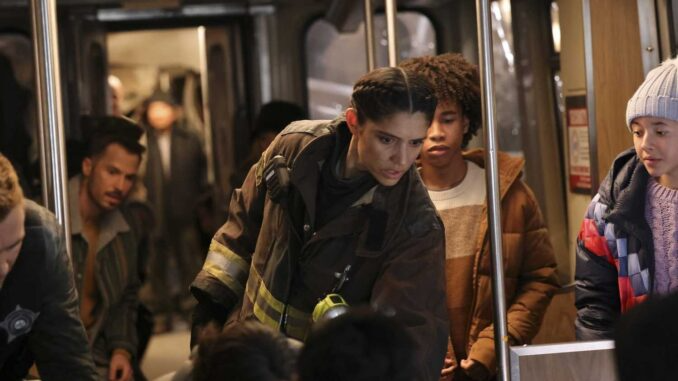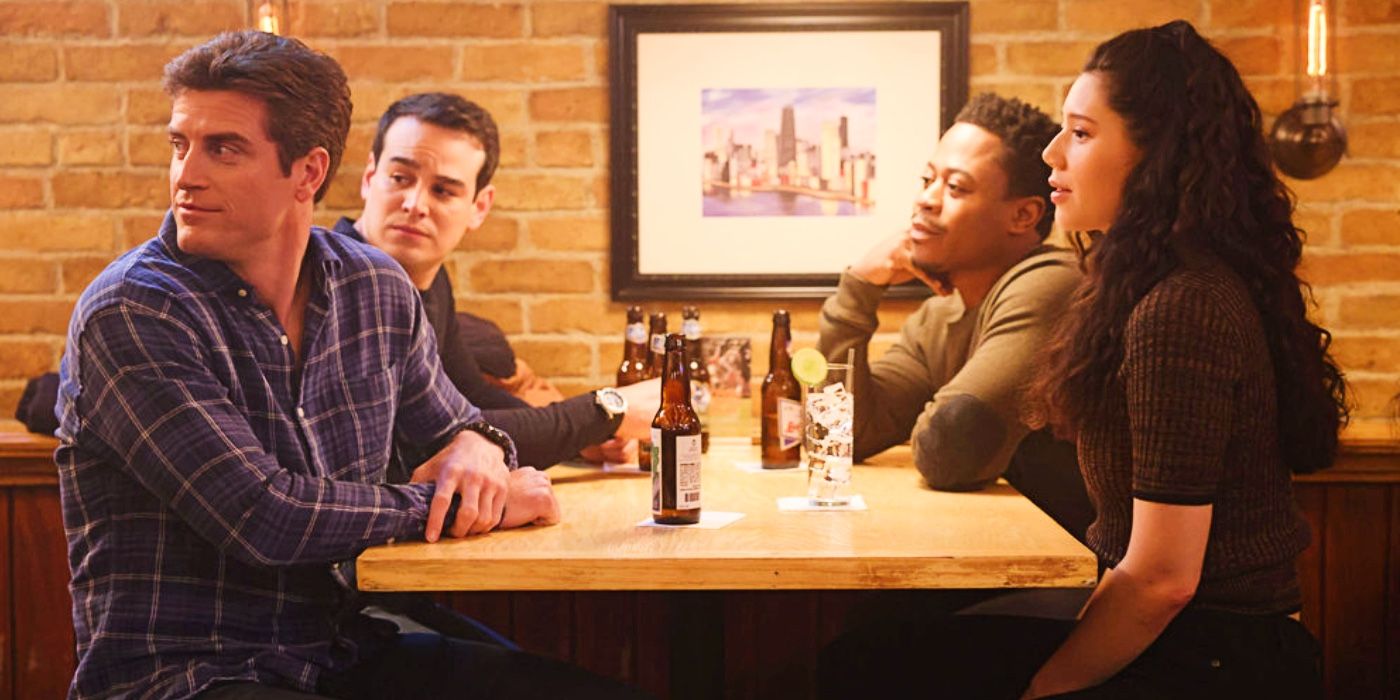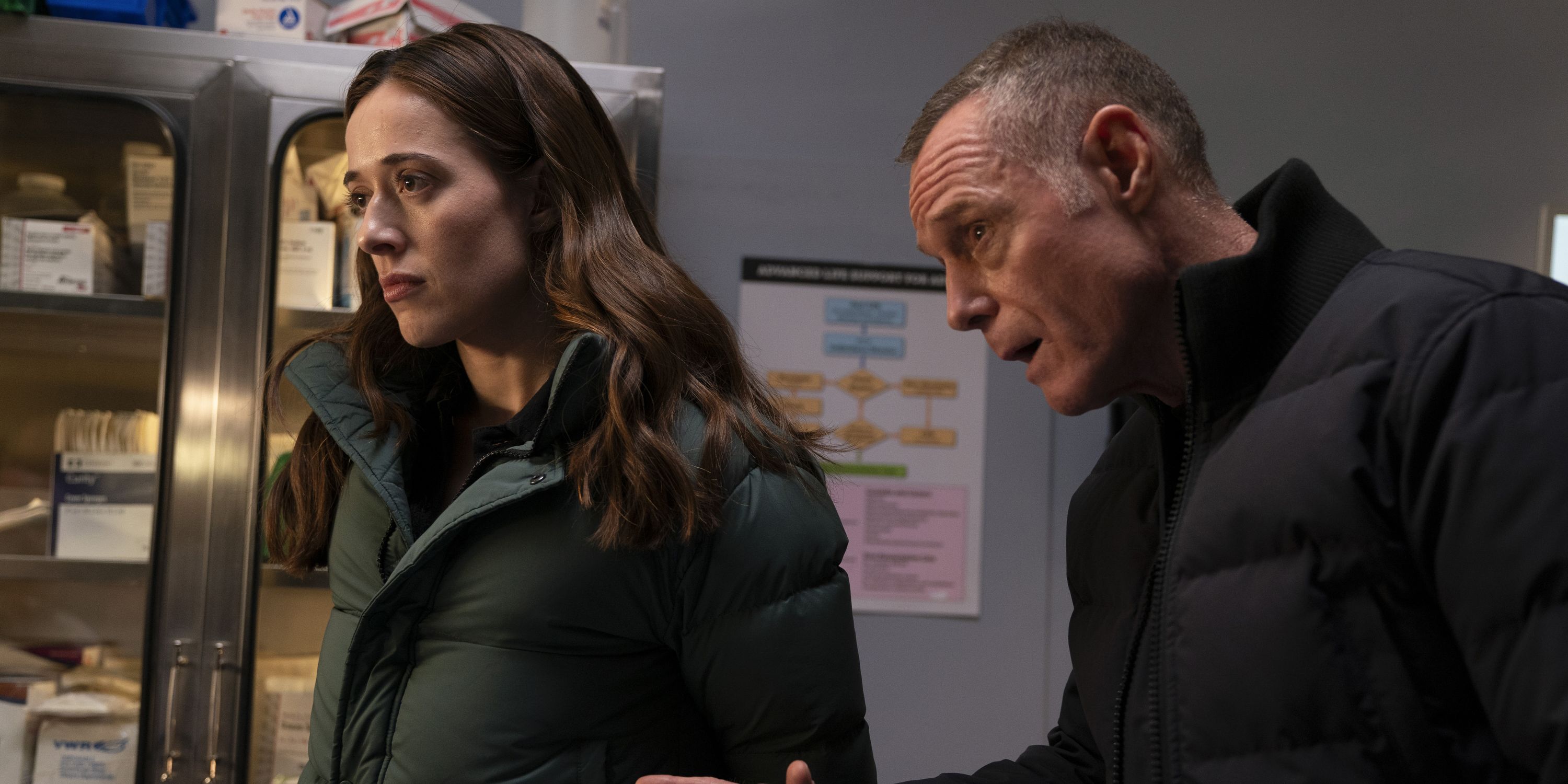
Since its earliest episodes in 2012, Chicago Fire has cemented its status as a cornerstone of Dick Wolf’s One Chicago universe, not just through blazing rescues and pulse-pounding action, but through its powerful character connections. At the heart of those relationships lies Molly’s—a little bar with big history. But for years, fans have shared one pressing question: how does Molly’s operate when Herrmann and Kidd are on shift?
Season 13, episode 14, titled “Bar Time,” finally puts that mystery to rest, and in doing so, reignites interest in the iconic establishment that has become a second home for Firehouse 51.
The Shift at Molly’s: Who’s Really Running the Bar?
While the episode dives into several intense arcs—including Sam Carver’s struggle with alcoholism and Christopher Herrmann temporarily stepping in as acting chief—it’s a subtle moment at Molly’s that answers a long-standing fan theory. For years, viewers have only seen Molly’s staffed by Herrmann, Kidd, or formerly, Gabby Dawson. Many assumed they somehow managed the bar around their firefighting shifts.
“Bar Time” confirms that Molly’s isn’t a one-man show. When Ambo 61 responds to a call at the bar, we see unfamiliar staff behind the counter—civilian employees who keep the place running during Herrmann and Kidd’s firefighting duties. It’s a small detail, but it validates what many suspected: the beloved pub has more hands behind the scenes than just its owners.

A Familiar Face Returns: Jack Damon’s Quiet Redemption
Among the episode’s standout moments is the surprise reappearance of Jack Damon, Severide’s half-brother and Benny Severide’s secret son. After being let go from Firehouse 51, Damon resurfaces in a different firehouse and ends up calling 911 when a patron collapses at Molly’s.
His calm response to the incident marks a shift in his trajectory. Once defined by uncertainty and secrecy, Damon now steps into a clearer sense of purpose. With his reintroduction to the narrative, Chicago Fire opens the door for deeper exploration into his family ties—and possibly another connection point to Kelly Severide, who remains absent but emotionally present in the show’s current landscape.
Molly’s as a Storytelling Engine
What makes Molly’s different from your average TV hangout? It’s more than just a watering hole. From first kisses and breakup blowouts to post-rescue bonding and tearful farewells, Molly’s is where the show slows down and lets its characters breathe. It’s been the setting for some of the series’ most human moments.
Much like Central Perk (Friends) or MacLaren’s (How I Met Your Mother), Molly’s serves as a narrative anchor. But unlike sitcoms, Chicago Fire uses the bar to emphasize community and reflection after trauma. It’s where Gallo confesses doubts, where Stella gathers the courage to lead, and where veterans like Herrmann and Mouch share hard-earned wisdom.
Herrmann’s Fork in the Road: A Future Behind the Bar?
As Herrmann temporarily steps into Pascal’s role in episode 14, he struggles with the administrative burden and emotional labor of being a chief. Viewers can sense his hesitation—he’s worn down, conflicted, and increasingly drawn to the idea of retirement.
Should he hang up his helmet, Molly’s could become his permanent post. The bar isn’t just a business—it’s a bridge to his old team, a place where his bond with Firehouse 51 can endure even after he leaves the field. That quiet option hangs in the air this season, and episode 14 makes it clear: Herrmann may already be considering it.
Why Molly’s Should Be a Crossroads for All of One Chicago
Season 13’s crossover event reignited love for the shared universe of Chicago Fire, Med, and P.D., but it also highlighted something missing: casual, cross-department interaction. In earlier seasons, it wasn’t uncommon to see members of Gaffney Medical Center and the Intelligence Unit sipping beers with firefighters at Molly’s. Those shared moments created a sense of lived-in continuity that is sorely missed.
With Damon reintroduced and characters like Violet, Lyla Novak, and Carver deep in personal turmoil, Molly’s could again become the perfect common ground for healing, mentoring, and bonding across departments. You don’t need a citywide crisis to bring the One Chicago family together—sometimes, all it takes is a stool at the bar.
Looking Ahead: Molly’s Matters More Than Ever
As Chicago Fire evolves and its veteran characters inch closer to transition or retirement, Molly’s will remain a symbol of continuity. Whether it’s a soft landing for longtime firefighters, a setting for personal revelations, or a way to reunite the One Chicago universe between crossovers, its narrative importance cannot be overstated.
Now that the question of Molly’s daily operation has finally been answered, one thing is clear: this little bar still has a lot of story to tell.
And with more shifts, surprises, and reunions surely on the way, Molly’s might just become the heart of One Chicago once again.

